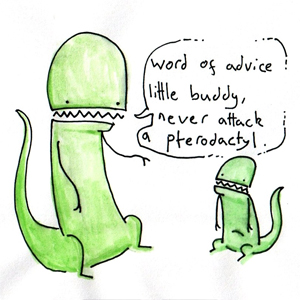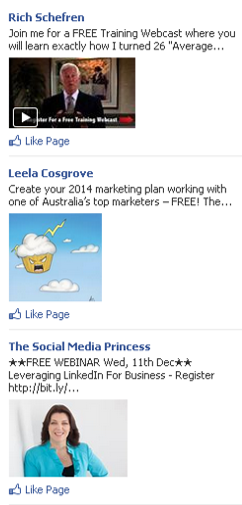 I was speaking at a seminar a while back. It went quite well. Got some good leads out of it. Which isn’t really the point about the story. But none the less I am new to the world of professional speaking and so getting leads was a real buzz.
I was speaking at a seminar a while back. It went quite well. Got some good leads out of it. Which isn’t really the point about the story. But none the less I am new to the world of professional speaking and so getting leads was a real buzz.
What I find really interesting was the behaviour of one of the leads in particular. So we scheduled a follow up call.
During the call he outlined what his problems were. He explained what he felt he really needed. And I knew going in I wasn’t his first priority, I was more interested in establishing when would be the right time to start to talk about what he and I were going to do.
Specifically his newsletter.
So this guy says to me, “I like this newsletter idea, but I only need to do it two or three times a year.”
So I asked ‘why?’ and the reply was “Oh I need to stay in touch with my clients but I don’t need to send them something monthly. They aren’t interested in anything but printing and I don’t have that much to say about it.”
My response was you can. “One of our clients is in your industry, does it monthly, does the exact opposite of what you just said and makes a 5:1 ROI. A big part of their success is their frequency. And they have plenty to say about printing. They are also able to create opportunities for their products that weren’t there before.”
Awkward silence and then he went back to telling me about how to do my job. Newsletters sold by this printer none. Newsletters sold by newsletter marketing systems… I have no idea what our customer count will be by the time you read this – but it is steadily rising at a predictable rate and at the time of writing we appear to have cracked the conversion code – the rate we are adding new customers is rising.
But I find it interesting when people ask you for advice and then go and do their own thing. It happens all the time in my consulting work. Regrettable for both me and ultimately the client – who never gets the result they want.
Interestingly, the problem with the opportunities we find doing existing customer opportunity audits, we find large amounts of very green grass within reach. Sometimes even embarrassingly large amounts of money.
Often times it is the client’s disbelief at the opportunity that makes it really difficult.
At this point the potential client will start telling me how to do my job. Or about how to do a newsletter properly. I don’t think that is so smart. I don’t advise businesses about how to do their core skill. I don’t tell printers how to print, engineers how to design and build things. I do know business, sales and marketing though. And to be honest, most people don’t. So I stop telling me how to do my job.
 I Wish I Was A
I Wish I Was A  In the business owners guide to getting more repeat business and referrals, Ben and I talk about churn:
In the business owners guide to getting more repeat business and referrals, Ben and I talk about churn: After doing an existing customer opportunity audit with a potential client I got a rather interesting reply.
After doing an existing customer opportunity audit with a potential client I got a rather interesting reply. Recently I was reading a book on trading. It fascinates me… Mostly because I need something in my life that I can endlessly talk about that means nothing, Football statistics, tactics and strategy is my poison of choice, it works in social situations. If it wasn’t football it probably would have been the stock market.
Recently I was reading a book on trading. It fascinates me… Mostly because I need something in my life that I can endlessly talk about that means nothing, Football statistics, tactics and strategy is my poison of choice, it works in social situations. If it wasn’t football it probably would have been the stock market. Since we all adhere to NMS production cycle…
Since we all adhere to NMS production cycle… We’ve all heard for a long time that the money is in the list.
We’ve all heard for a long time that the money is in the list. (Names changed to protect the innocent).
(Names changed to protect the innocent). With Ben and Hollie expecting a baby come April, I was leafing through our article ideas materials looking for an idea for this article. One of them is ‘would you recommend your kids get a job in this industry.’
With Ben and Hollie expecting a baby come April, I was leafing through our article ideas materials looking for an idea for this article. One of them is ‘would you recommend your kids get a job in this industry.’ I love my Facebook account. Oh wait, sarcasm doesn’t come across in the printed word -93% of communication is not the words – its tone of voice and body language.
I love my Facebook account. Oh wait, sarcasm doesn’t come across in the printed word -93% of communication is not the words – its tone of voice and body language.